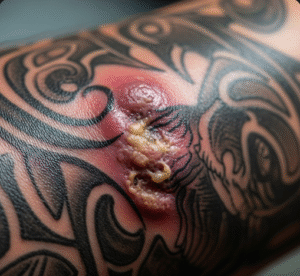Overview
Heterochromia is a condition in which a person has two different colored eyes or variations in color within the same eye. It can be present at birth (congenital) or acquired later in life due to injury, disease, or medication effects.
While most cases are harmless and purely cosmetic, heterochromia can occasionally indicate an underlying eye condition or systemic disease. In South Korea, advanced ophthalmology clinics provide thorough eye examinations, diagnostic testing, and specialized care for patients with heterochromia or related eye concerns.
Key Facts
🟢 ➤ Heterochromia refers to differences in coloration of the iris, eyes, or parts of the same eye.
🟢 ➤ It can be congenital (present from birth) or acquired (developed later in life).
🟢 ➤ Most cases are benign, but sometimes associated with medical conditions.
🟢 ➤ Causes include genetics, injury, medications, or eye disease.
🟢 ➤ Rarely, heterochromia may indicate systemic disorders like Horner’s syndrome or Waardenburg syndrome.
🟢 ➤ Korean ophthalmology centers provide diagnosis, cosmetic evaluation, and treatment for related conditions.
What is Heterochromia?
Heterochromia occurs when the pigment in the iris differs between the two eyes (complete heterochromia) or within different areas of the same eye (sectoral heterochromia).
Key characteristics:
➤ Complete heterochromia – one eye is a completely different color from the other.
➤ Sectoral (partial) heterochromia – part of one iris differs in color from the rest.
➤ Usually genetically inherited, though it may appear due to injury, inflammation, or certain medications.
➤ May affect eye color only or be associated with other ocular or systemic features in rare syndromes.
Symptoms Related to Heterochromia
Heterochromia is often cosmetic, with few symptoms beyond eye color variation:
🟢 ➤ Noticeable difference in eye color between the two eyes or within one eye.
🟢 ➤ Rarely, light sensitivity or visual disturbances if associated with underlying eye disease.
🟢 ➤ Sometimes linked with other ocular abnormalities in syndromic cases.
🟢 ➤ No pain or discomfort in most benign cases.
🟢 ➤ Cosmetic concern may prompt some individuals to seek evaluation.
Causes / Possible Causes
Heterochromia can result from genetic, congenital, or acquired factors:
Genetic / Congenital Causes
➤ Inherited traits may produce harmless differences in eye pigmentation.
➤ Syndromes such as Waardenburg syndrome may include heterochromia as a feature.
Acquired Causes
➤ Eye injuries or trauma – can alter pigmentation.
➤ Inflammatory eye diseases – uveitis or Horner’s syndrome may cause color changes.
➤ Medications – certain glaucoma eye drops can darken iris pigmentation.
➤ Tumors – rare iris tumors can lead to localized color change.
When Should I See a Doctor?
Medical evaluation is recommended if heterochromia is new or associated with other symptoms:
🟢 ➤ Sudden change in eye color in one eye.
🟢 ➤ Vision changes, pain, redness, or light sensitivity.
🟢 ➤ Swelling or irregularity of the iris.
🟢 ➤ Family history of syndromes associated with heterochromia.
🟢 ➤ Cosmetic concerns requiring assessment for safety or treatment options.
Early evaluation ensures underlying causes are ruled out, particularly in acquired heterochromia.
Care and Treatment
Treatment depends on whether heterochromia is benign or associated with disease:
Benign Heterochromia
➤ Usually requires no treatment.
➤ Cosmetic options include colored contact lenses if desired.
Medical or Syndromic Cases
➤ Address underlying eye disease or systemic condition (e.g., inflammation, Horner’s syndrome, tumors).
➤ Regular ophthalmology follow-up to monitor eye health and vision.
Advanced Care in Korea
➤ Ophthalmology centers provide diagnosis, imaging, and management for acquired heterochromia.
➤ Cosmetic consultation and contact lens solutions are available for aesthetic concerns.
Highlights (Clean Green Arrow Version)
🟢 ➤ Heterochromia is a difference in iris color between eyes or within one eye.
🟢 ➤ Can be congenital (genetic) or acquired due to injury, disease, or medications.
🟢 ➤ Most cases are benign with no visual symptoms.
🟢 ➤ Possible associated conditions: Horner’s syndrome, Waardenburg syndrome, or ocular disease.
🟢 ➤ Treatment usually not required unless associated with disease or for cosmetic purposes.
🟢 ➤ South Korea provides ophthalmology evaluation, imaging, and cosmetic solutions if needed.













